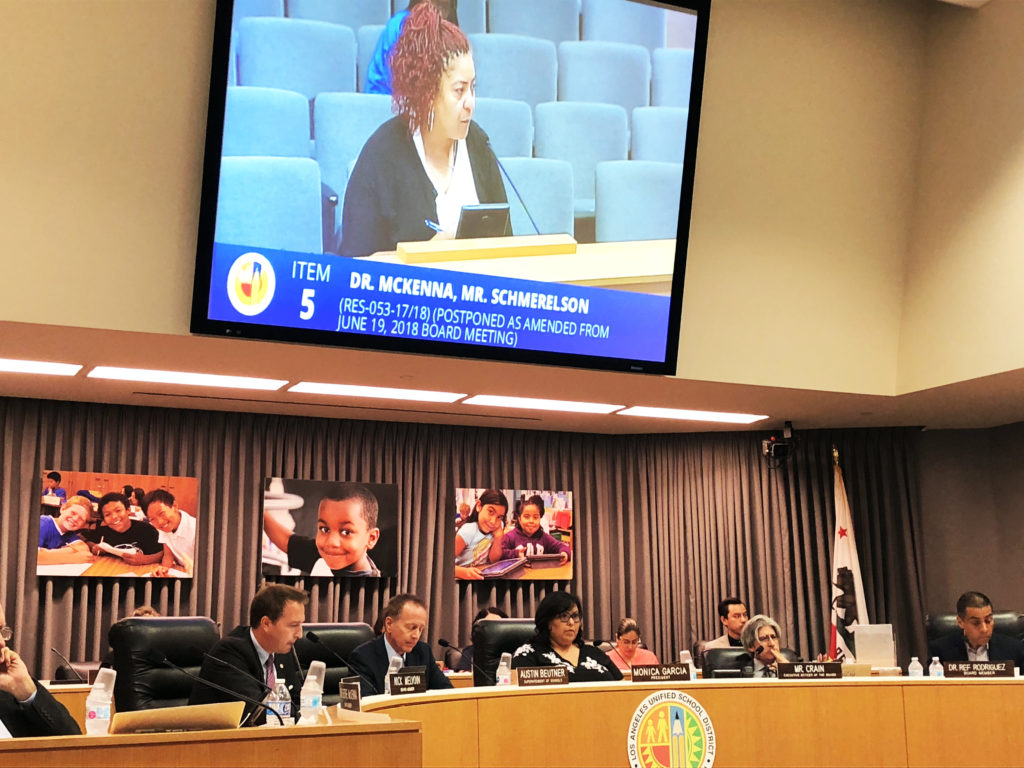A Topsy-Turvy Week for Charter Schools and School-Choice Tax Credits
Teacher pension fund is in the money . . . Is a Kevin De León bill in the IRS’s crosshairs? . . . The State Board of Education greenlights yet another Oakland charter school.
California’s public school and community college teachers can expect good news tomorrow when the $208.7 billion California State Teachers’ Retirement System (CalSTRS) releases its official net returns for fiscal year 2017-18. Last year, the pension fund posted a 13.4 percent gain — nearly twice its official seven percent discount rate. Coming on the heels of the robust 8.6 percent return announced last week by the California Public Employees’ Retirement System (CalPERS), expectations are running high. Public sector pensions continue to top neoliberal hit lists, and a second year in the double digits will buy political breathing space for one of the last pillars of ironclad middle-class retirement security.
“When public sector pension funds hit their mark or do better than the market, [the anti-union media] downplay it, and every time they go below the mark, it’s ‘the sky is falling and [we] have to take everybody’s pensions away,'” chairman of Californians for Retirement Security Dave Low quipped to Learning Curves. (Disclosure: Low sits on this website’s board of directors.)
On the other hand, the L.A. Times reported this week that so-called neovouchers, which have been embraced by Betsy DeVos and are popular with school-choice proponents, are among more than 100 charitable tax-credit programs now endangered by IRS blowback to dueling tax measures from DC Republicans and resistance states like California.
Proposed IRS rules that target blue state legislative workarounds to the $10,000 cap for state and local income taxes (SALT) in last year’s $1.5 trillion, Republican tax bill would almost certainly also eliminate deductions for neovouchers. In the crosshairs is SB 227, the public education charity proposed by state Senator and U.S. Senate candidate Kevin De León (D-Los Angeles) that Californians could use to make up the pre-SALT write-offs.
“Even before the tax rule, there were things in this gray area between charity and public services,” explained Kim Rueben, a Public Policy Institute of California adjunct fellow and Urban-Brookings Tax Policy Center senior fellow. “If they’re going to try and put a bright line in and say that people can’t take this as a charitable deduction because of the value in terms of savings from their state taxes, that same value is already accruing to people across this country from these existing tax credits.”
Charter school politics don’t get more topsy-turvy than in Sacramento, where the State Board of Education (SBE) is charged with doing good for California’s 6.2 million-student system of public schools, but which last week nudged Oakland’s financially stricken school district closer to the brink by saddling it with another new charter school that parents, students, the historically pro-charter OUSD board and an Alameda County Grand Jury say it neither needs nor can afford.
“It shows how disconnected they are from what’s going on in our cities … or what’s happening with underfunded public schools in California,” said activist Mona Treviño of the green light given at SBE’s July 12 meeting for Latitude charter high school to open its doors in the fall.
The unexpected at the board’s otherwise business-as-usual session came with a mea culpa offered by the state’s chief deputy superintendent of public instruction, Glen Price, who also called for “modernizing” 1998’s dated AB 544, the Reed Hastings-lobbied law that transformed California’s formerly benign Charter School Act into a poison pill for districts, by making it illegal for authorizers such as local school boards to consider the financial damage charters inflict on their hosts.
“At some point we have to consider the whole ecosystem — the whole community that we’re operating in when making these decisions,” Price reasoned. “There’s no other area of local or community planning where we would not consider the financial impact of a decision.” More Education News @ Capital & Main: A Topsy-Turvy Week for Charter Schools and School-Choice Tax Credits | Capital & Main


Learning Curves: New Column Reports on the Education Wars | Capital & Main - https://capitalandmain.com/?p=80437 by @billraden on @capitalandmain
Editor’s Note: Today Capital & Main’s education reporter, Bill Raden, begins a new weekly column covering the contentious, ever-changing landscape of California’s education system. A staccato-paced selection of news items, profiles and dish, “Learning Curves” will report on everything from charter school controversies in K-12 schools to the skyrocketing costs of attending college. Other issues will include school funding, equity, and the intersection of education and inequality.



